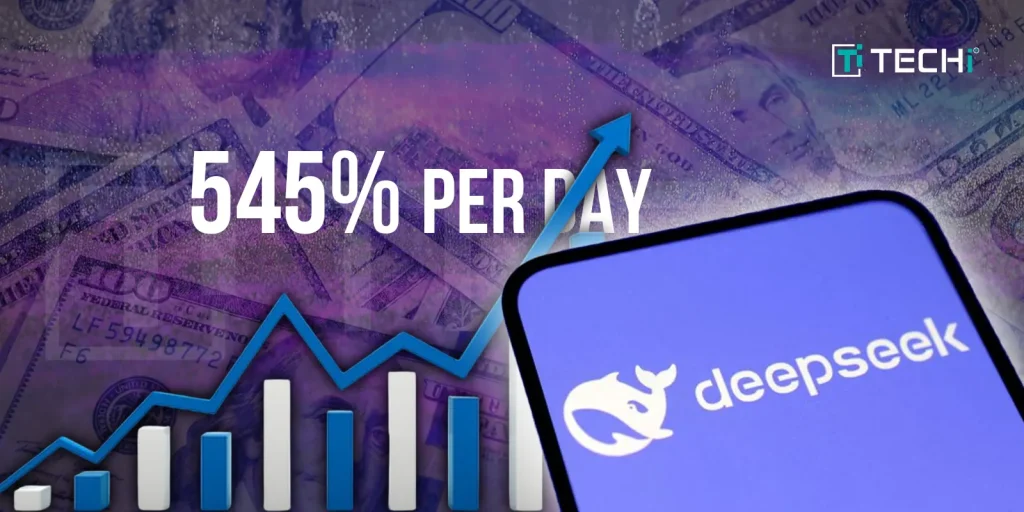Just a few months ago, DeepSeek was a little-known name in AI, but that changed in January when the Chinese startup launched an AI model that challenged OpenAI’s dominance. Despite operating under U.S. trade restrictions, DeepSeek developed a model that reportedly matched OpenAI’s GPT-4 (o1 variant) on certain benchmarks, grabbing headlines and briefly overtaking ChatGPT on Apple’s App Store rankings. DeepSeek is making another bold claim about its profitability this time. The company recently revealed that its AI models supposedly generate an eye-watering 545% profit margin. But there’s a catch: the number is based on theoretical income rather than actual revenue.
DeepSeek’s 545% Profit Claim: The Fine Print
In a post on X (formerly Twitter), DeepSeek claimed that if all AI usage over 24 hours had been billed under its R1 model pricing, the company would have earned $562,027 in daily revenue. Meanwhile, leasing the required GPUs (graphics processing units) would have been only $87,072—resulting in the headline-grabbing 545% cost-profit margin. However, DeepSeek admitted in a longer GitHub post that its actual revenue is much lower due to the following:
Nighttime discounts reduce revenue during off-peak hours.
Lower pricing for the V3 model, which undercuts theoretical income.
Free access to web and app services, meaning only a portion of users are monetized.
The GitHub post also outlined DeepSeek’s technical approach to improving AI efficiency, focusing on higher throughput and lower latency. The company emphasized that its infrastructure is optimized for performance, but profitability still depends on how AI services are priced and used.
A Glimpse Into AI’s Profitability Debate
DeepSeek’s claim, while speculative, adds fuel to the ongoing discussion about the cost of AI and its potential for profitability. Training and running AI models require enormous computing power, often making them expensive. Tech giants like OpenAI, Google, and Anthropic have yet to prove whether AI chatbots can become sustainably profitable at scale. Yet, DeepSeek’s ability to develop a competitive AI model at a fraction of OpenAI’s cost already had analysts questioning the actual financials of AI research. Its latest claim of theoretical profitability further challenges the narrative that AI is a money-losing business.
DeepSeek’s AI and Market Impact
DeepSeek has already left a mark on the AI industry:
- Its January model launch rattled Wall Street, raising concerns about AI development costs.
- Its app briefly displaced ChatGPT at the top of Apple’s App Store rankings before settling at #6 in the productivity category, behind ChatGPT, Grok, and Google Gemini.
AI Monetization: Reality vs. Hype?
DeepSeek’s numbers suggest AI models could be extremely profitable under the right conditions, but whether this translates to sustainable revenue growth remains unclear. With the race for AI profitability heating up, one key question remains: Are AI startups truly on the brink of massive profits, or are these numbers just hopeful projections? Let us know your thoughts in the comments.
Read More: OpenAI to Integrate Sora’s AI Video Generator into ChatGPT





Administrator